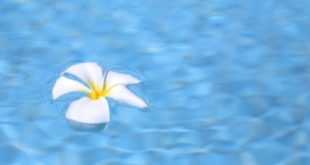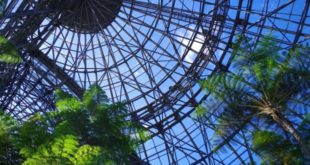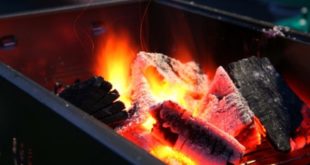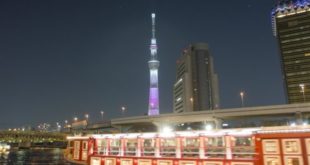The “Suga-Jinja Shrine,” which is enshrined in Yotsuya since the beginning of the Edo period, was published in 2016 by the long-animated animation film “Kimi-no-mei.”.There are many fans from around the world as the land of pilgrimage to the sacred land.
In this article, I’ll show you how to enjoy Suga-Jinja Shrine, which still attracts fans.If you haven’t visited yet, please try to refer to it.
Basic information Suga-Jinja Shrine
“What’s the name of Kimino?Suga-Jinja Shrine, which is famous as a sacred place for the holy land, is a place where fans want to visit.Taking pictures of the stairs depicted in the last scene of the movie is one of the pleasures, but if you deepen understanding of the history of Suga-Jinja Shrine, you can also feel the wonders of the Suga-Jinja Shrine.
Then let’s look at the basic information, access method and history of Suga-Jinja Shrine.
Suga-Jinja Shrine is
Suga-Jinja Shrine is the Sochinju of Yotsuya 18 towns.In the Edo period, he was worshipped as’ Tennosama’ by Chinju Yotsuya.The main enshrined deity is “Susanoonomikoto no Okami,” which appears as the main character in Japanese mythology, and “Ukanomitamanokami no Okami,” which is known as Inari, and “Inari-okami”.
As the god of the exorosity of evil spirits and the elimination of evil spirits, Okami no Okami was worshipped by the common people for a long time as god of prosperous business prosperity and good fortune.
The annual events in Suga-Jinja Shrine include the regular festival in June, Tori no ichi in November and Ooharae at the end of November at the end of the twelfth month.The details are described in “Suga-Jinja Shrine Appeal and enjoyment”.
Address : 5 Sukacho, Shinjuku-ku, Tokyo 160 – 0018.
Telephone number : 03 – 3351 – 7023 (Suga-Jinja Shrine Office : 9 : 00 – 17:00)
Time to visit : 9 : 00 to 17:00 without leave
Homepage : http://www.sugajinjya.org/
Access to Suga-Jinja Shrine Parking lots, parking lots, and nearest stations
If you take a train, you can walk to Suga-Jinja Shrine for about 10 minutes.It is located between Yotsuya Station and Shinanomachi Station.
7 minute walk from Yotsuya-sanchome on the Tokyo Metro Marunouchi Line.
10 minute walk from Yotsuya on the JR Chuo Rapid Line and Sobu Line.
10 minutes walk from Shinano-cho Station on the JR Sobu Line.
10 minute walk from Yotsuya on the Tokyo Metro Marunouchi Line and Nanboku Line.
If you are going out by car, you can use the parking lot of the shrine (entrance 4), but this article introduces you to the nearest parking lot, so please refer to it.
The parking fee may vary.When you use a parking lot, make sure to check the local charge.
Address : 2 chome, Wakaha, Shinjuku-ku, Shinjuku-ku, Tokyo 160 – 0011, 4-27
Business hours : 24 hours
Maximum price : Up to 1,700 yen for 24 hours (repeatable) 18:00 ~ 8:00 / 500 yen (repeatable)
Hourly fee : 200 yen per 20 minutes every day
Location : Flat
Total number : 5 units
Credit card : not available
Address : Sukacho 6, Shinjuku-ku, Tokyo 160 – 0018
Business hours : 24 hours
Maximum price : Monthly to Friday, Saturday / 8:00 ~ 18:00 maximum 2,200 yen 18:00 ~ 8:00 maximum 500 yen, Sundays / holidays / 8:00 ~ 18:00 maximum 1,500 yen 18:00 ~ 500 yen 8:00
Time rate : 200 yen per month to Friday, Saturday / 0:00 – 24:00 15 minutes, yen for Sundays / holidays / 0:00 ~ 24:00 for every 15 minutes. 200
Location : Flat
Total number : 5 units
Credit card : available
Address : Sukacho 9, Shinjuku-ku, Tokyo 160 – 0018
Business hours : 24 hours
Maximum price : up to 2,000 yen for 12 hours
Time fee : 200 yen 24:00 to 8:00 60 minutes every 8:00 to 24:00 20 minutes every minutes. 100
Location : Flat
Total number : 10 units
Credit card : available
The history of Suga-Jinja Shrine
Suga-Jinja Shrine, located in Sukacho, Shinjuku-ku, was founded in 1634 at Inari-jinja Shrine in 11 years.In 1644, the shrine was enshrined in a Susanoonomikoto that was enshrined at Kanda Myojin Shrine, and it was called the Inari-Tenno-sha Shrine, but the system was abolished by the Meiji period, and the old shrine ranking was abolished in 1868, and it was renamed as Suga-Jinja Shrine in 1868 (21).
The name’ Suga’ derives from the word’ Goko, Suga and Suga,’ in the word “Go here,” when the Susanoonomikoto retreated from a large snake in the 8 mata which was located upstream of the Hikawa River in Izumo Province (Shimane Prefecture).
In the precinct, there is’ Sanjurokkasen 繪’ (The Thirty Six Immortal Poets), painted in 1836, in 7.Paintings of poets such as Kakinomoto Hitomaro, Ki no Tsurayuki, Otomo no Yakamochi and Ariwara no Narihira are offered.A portrait of a masterpiece was attached to the portrait of the portrait, and it is known as the treasure of Suga-Jinja Shrine.
Suga-Jinja Shrine Amulets and Goshuin
The Goshu-inpu in Yotsuya Suga-Jinja Shrine (Shinjuku Ward) is’ only written in writing,’ and there is no limited seal.If you want to receive a seal of worship after visiting the shrine, visit the office of the shrine.
- Reception time : 9 : 00 – 17:00 (excluding 12:00 – 13:00)
- Hatsuyo : 300 yen
Suga-Jinja Shrine Charm and Fun
Then I’ll introduce you to the charm of Suga-Jinja Shrine and how to enjoy it.Let’s look at the annual events and highlights together.
Regular festival
There are many open stalls in the precincts of the annual grand festival held every year.This year marks the thirtieth anniversary of the abdication of the Emperor by the Emperor on April 1, the year when the Crown Prince was enthroned by the Imperial prince.Therefore, the festival held in June is scheduled to be held in a bigger scale than the year when the Emperor’s enthronement Ceremony is held.
The Emperor’s Enthronement ceremony “Suga-Jinja Shrine”
Date : May 31, 2019 (Fri) – June 3 (Mon)
Site : 2 days for June 1 (Sat) and June 2 (Sunday)
- May 31 (Fri) : “Yomiya” (pre-night festival)
- June first (Sat) : From 11 am at 5 pm in the precincts, “Dedication to the Japanese Drums”
- June second (Sun) : At 11 30 p.m. on the morning of the mikoshi togyo carrying miniature shrines at 5 p.m.
- June third (Mon) : “Shusai”
For 2 days on June first and second, Kagura and dancing are held at Kaguraden.Why don’t you visit the shrine with this opportunity?
Tori no ichi
In Suga-Jinja Shrine and Otori Shrine, “Yamato-no-ichi no Mikoto” and “Otori no Muraji no Kami” are enshrined, and on the day of Tori no Ichi in November every year, “Tori no ichi” is held.The rooster’s day is visited every 12 days, so this year will take place on the second.
Visitors who receive the “Kaizen Kumate no Kami” in Suga-Jinja Shrine can win a lottery with a luxurious prize once a day.
Tori no Ichi “Yotsuya Otori Shrine (Suga-Jinja Shrine)”
- one rooster : November eighth (Fri)
- 2 rooster : November twentieth (Wed)
Ooharai
Oharai is held on the last day of June and December every year.It is said that Oharai in summer is called “Oharai no Ooharai” and Oharai in December is called “Ooharai no Oharai” in December.
Oharai is a traditional Japanese thinking that aims to purify and purify various sins and mistakes that cause physical and mental impurity and evil.It has been held since ancient times as an opportunity to look back on itself.
In Oharai, the name and age are written in the shape of a Tashiro (a person who cut a piece of paper into a person’s shape), and the body is stroked and breathed.It is to move the six months’ sins and impurities, and purify them in place of our own.
“Suga-Jinja Shrine”
- June thirtieth (Sun) 5 p.m.
- December thirty first (Tuesday) 5 pm Ooharagami Execution
“Kimi no Namena” tour
The immortal masterpiece that fascinated people around the world.It is said to have been a story of a famous waka poem by ONO no Komachi, a famous waka poem of ONO no Komachi, in the “Kokin Wakashu” (Collection of Ancient and Modern Japanese Poetry).
“I’m going to look for you, I’ve never met you yet.” The words of the protagonist, Taki, were impressive.Films drawn with beautiful colors and delicate words have inspired and influenced many people.
Many people visit the stairs drawn in the last scene, so I recommend you to take pictures early in the morning.It’s nice to visit the spot while feeling the thoughts of the 3 leaves and the waterfall.
Suga-Jinja Shrine
This time, “I have a lot of money.I introduced you about the attraction and enjoyment of Suga-Jinja Shrine, which is known as the holy land of “The holy grail.”.How was it?Suga-Jinja Shrine is also recommended for those who want to visit history.The annual event of the year was also attractive.
This year’s grand festival is scheduled to be held as a grand festival for the enthronement ceremony of the Emperor of the Emperor, so why don’t you go out to visit the Suga-Jinja Shrine yet?
 toptrip
toptrip






